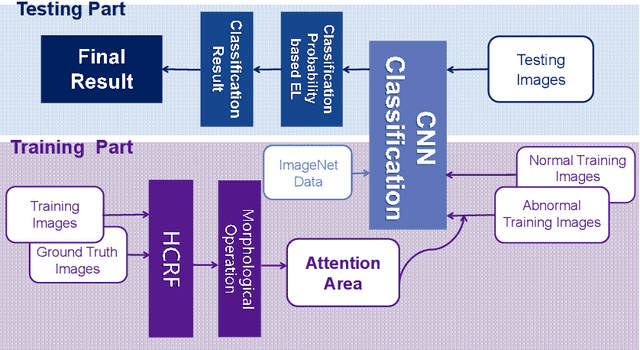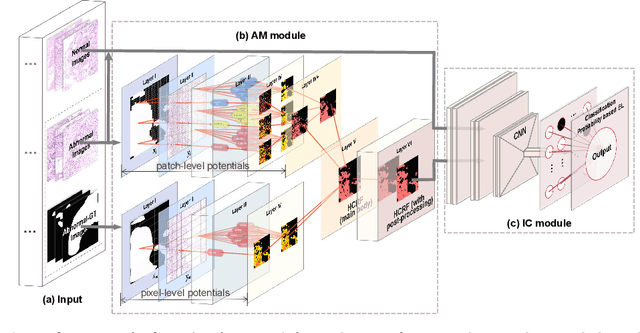Md Rahaman
A Comprehensive Review of Computer-aided Whole-slide Image Analysis: from Datasets to Feature Extraction, Segmentation, Classification, and Detection Approaches
Feb 21, 2021



Abstract:With the development of computer-aided diagnosis (CAD) and image scanning technology, Whole-slide Image (WSI) scanners are widely used in the field of pathological diagnosis. Therefore, WSI analysis has become the key to modern digital pathology. Since 2004, WSI has been used more and more in CAD. Since machine vision methods are usually based on semi-automatic or fully automatic computers, they are highly efficient and labor-saving. The combination of WSI and CAD technologies for segmentation, classification, and detection helps histopathologists obtain more stable and quantitative analysis results, save labor costs and improve diagnosis objectivity. This paper reviews the methods of WSI analysis based on machine learning. Firstly, the development status of WSI and CAD methods are introduced. Secondly, we discuss publicly available WSI datasets and evaluation metrics for segmentation, classification, and detection tasks. Then, the latest development of machine learning in WSI segmentation, classification, and detection are reviewed continuously. Finally, the existing methods are studied, the applicabilities of the analysis methods are analyzed, and the application prospects of the analysis methods in this field are forecasted.
A Hierarchical Conditional Random Field-based Attention Mechanism Approach for Gastric Histopathology Image Classification
Feb 21, 2021



Abstract:In the Gastric Histopathology Image Classification (GHIC) tasks, which is usually weakly supervised learning missions, there is inevitably redundant information in the images. Therefore, designing networks that can focus on effective distinguishing features has become a popular research topic. In this paper, to accomplish the tasks of GHIC superiorly and to assist pathologists in clinical diagnosis, an intelligent Hierarchical Conditional Random Field based Attention Mechanism (HCRF-AM) model is proposed. The HCRF-AM model consists of an Attention Mechanism (AM) module and an Image Classification (IC) module. In the AM module, an HCRF model is built to extract attention regions. In the IC module, a Convolutional Neural Network (CNN) model is trained with the attention regions selected and then an algorithm called Classification Probability-based Ensemble Learning is applied to obtain the image-level results from patch-level output of the CNN. In the experiment, a classification specificity of 96.67% is achieved on a gastric histopathology dataset with 700 images. Our HCRF-AM model demonstrates high classification performance and shows its effectiveness and future potential in the GHIC field.
 Add to Chrome
Add to Chrome Add to Firefox
Add to Firefox Add to Edge
Add to Edge